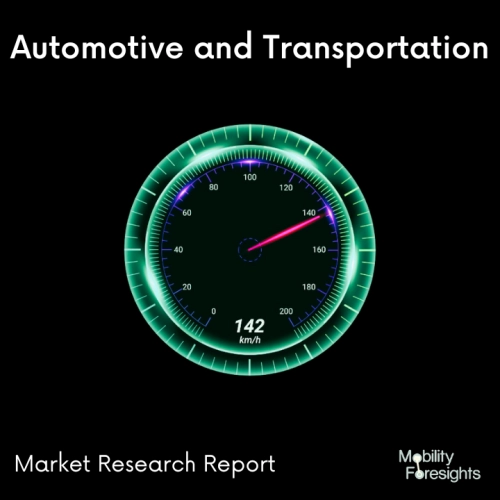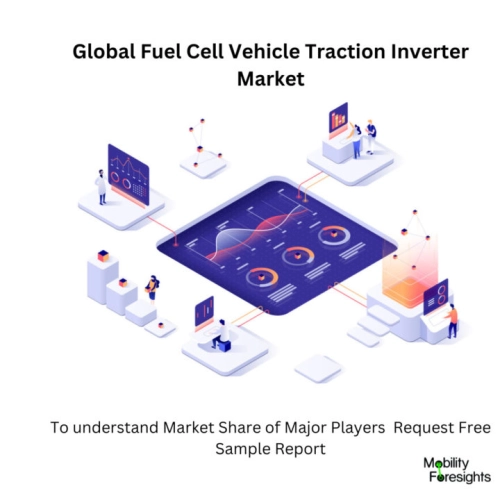
- Get in Touch with Us

Last Updated: Apr 25, 2025 | Study Period: 2023-2030
The inverter system must convert the fuel cell output while accounting for unavoidable fluctuations in load and fuel cell response time. The cells' dc output fluctuates with load and age, as well as with a polarisation curve that is a result of the electrochemistry.
Fuel cell vehicles are propelled by compressed hydrogen gas that is fed into a fuel cell stack onboard that converts chemical energy from the fuel into electrical energy rather than burning the gas. The car's electric motors are then driven by this electricity.

The Global Fuel Cell Vehicle Traction Inverter market accounted for $XX Billion in 2022 and is anticipated to reach $XX Billion by 2030, registering a CAGR of XX% from 2023 to 2030.
Infineon introduces HybridPACK Drive G2, a new automotive power module for traction inverter in electric vehicles.Different current ratings, voltage levels (750V and 1200V), and Infineon's cutting-edge semiconductor innovations EDT3 (Si IGBT) and CoolSiC G2 MOSFET will be offered in the HybridPACK Drive G2.
The Hybrid PACK Drive G2 offers great ease-of-use and new capabilities, such as an integration option for next-generation phase current sensor and on-chip temperature measurement for IGBT products, which enable system cost reductions.
It has a power range of up to 300 kW within the 750 V and 1200 V classes. With better assembly and connectivity technology, the power module delivers higher performance and power density.
The use of new connecting technology (chip sintering) and materials (new black plastic housing) allows for higher temperature ratings, resulting in higher performance and longer product life.The first generation (G1) of HybridPACK Drive, based on silicon EDT2 technology, was introduced.
In the 750 V class, it has a power range of 100 kW to 180 kW. With the first generation of HybridPACK Drive Automotive CoolSiC MOSFETs, Infineon expanded its product family, allowing the inverter design to reach higher power up to 250 kW within the 1200 V class, longer driving range, reduced battery capacity, and optimised system size and cost.
| Sl no | Topic |
| 1 | Market Segmentation |
| 2 | Scope of the report |
| 3 | Abbreviations |
| 4 | Research Methodology |
| 5 | Executive Summary |
| 6 | Introduction |
| 7 | Insights from Industry stakeholders |
| 8 | Cost breakdown of Product by sub-components and average profit margin |
| 9 | Disruptive innovation in the Industry |
| 10 | Technology trends in the Industry |
| 11 | Consumer trends in the industry |
| 12 | Recent Production Milestones |
| 13 | Component Manufacturing in US, EU and China |
| 14 | COVID-19 impact on overall market |
| 15 | COVID-19 impact on Production of components |
| 16 | COVID-19 impact on Point of sale |
| 17 | Market Segmentation, Dynamics and Forecast by Geography, 2022-2030 |
| 18 | Market Segmentation, Dynamics and Forecast by Product Type, 2022-2030 |
| 19 | Market Segmentation, Dynamics and Forecast by Application, 2022-2030 |
| 20 | Market Segmentation, Dynamics and Forecast by End use, 2022-2030 |
| 21 | Product installation rate by OEM, 2022 |
| 22 | Incline/Decline in Average B-2-B selling price in past 5 years |
| 23 | Competition from substitute products |
| 24 | Gross margin and average profitability of suppliers |
| 25 | New product development in past 12 months |
| 26 | M&A in past 12 months |
| 27 | Growth strategy of leading players |
| 28 | Market share of vendors, 2022 |
| 29 | Company Profiles |
| 30 | Unmet needs and opportunity for new suppliers |
| 31 | Conclusion |
| 32 | Appendix |